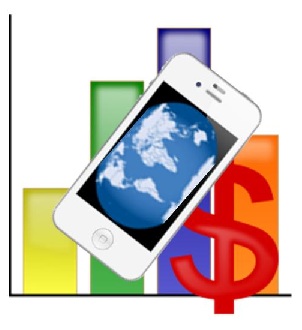New ad formats and mechanisms change consumer perceptions
Hampshire, UK – 22nd October 2013: A new report from Juniper Research has found that increased utilisation of analytics platforms, allied to the introduction of innovative ad formats and purchasing mechanisms, will push global mobile ad spend beyond $39 billion in 2018, up from $13 billion this year.
Rich Media Ads Lead
The report – Mobile Advertising: In-App, Mobile Internet & Messaging Strategies 2013-2018 –highlighted the opportunities offered by targeted in-app advertising, citing the dramatic success of Facebook in monetising its native applications over the past year. Mobile now contributes 41% to its overall advertising revenue. Facebook recently announced that it is going to begin rolling out video ads, a move illustrative of the wider industry trend for interactive rich media ads, away from underperforming mobile banner adverts.
Furthermore, the report observed that the growth of Real-Time Bidding (RTB), a mechanism which lets advertisers buy impressions in real-time, means that publishers will be able to more easily sell their advertising inventory, which will thereby boost overall mobile ad spend.
”A Change in Consumer Perceptions”
However the report also pointed out that some brands still remain wary of the mobile channel due to concerns that mobile advertisements may be perceived as inappropriate or intrusive. Indeed, the report noted the disproportionately low spend on mobile advertising, versus other mediums, relative to the high engagement levels that frequently occur.
Report author Sian Rowlands pointed out, however, that “we are witnessing a change in consumer perceptions of mobile advertising as advertisers begin to use opt-in, or reward-style advertising; by harnessing big data and location information, mobile ads are being better targeted to users.”
Other Key Findings from the Report Include:
• The fastest growing region, in terms of mobile ad spend, will be the Indian Subcontinent. Spend here will increase four times from 2013 to 2018.
• Advertisers can increase conversions by simply adding mobile optimised features, for instance a ‘click to call’ button, or by linking to the correct app store.
The “Mobile Advertising – It All Ads Up” whitepaper is available to download from the Juniper website together with further details of the full report.
Juniper Research provides research and analytical services to the global hi-tech communications sector, providing consultancy, analyst reports and industry commentary.
For further details please contact Michele Ince, Press Relations

 It is the data, itself, that often has the highest amount of worth. Though certain techniques are able to generate several levels of benefits, some geolocation tactics are able to allow marketers to arrive at certain goals better than others. As the technology is used by a growing number of marketers and on a more regular basis, the methods and techniques are growing in number and in polish.
It is the data, itself, that often has the highest amount of worth. Though certain techniques are able to generate several levels of benefits, some geolocation tactics are able to allow marketers to arrive at certain goals better than others. As the technology is used by a growing number of marketers and on a more regular basis, the methods and techniques are growing in number and in polish.